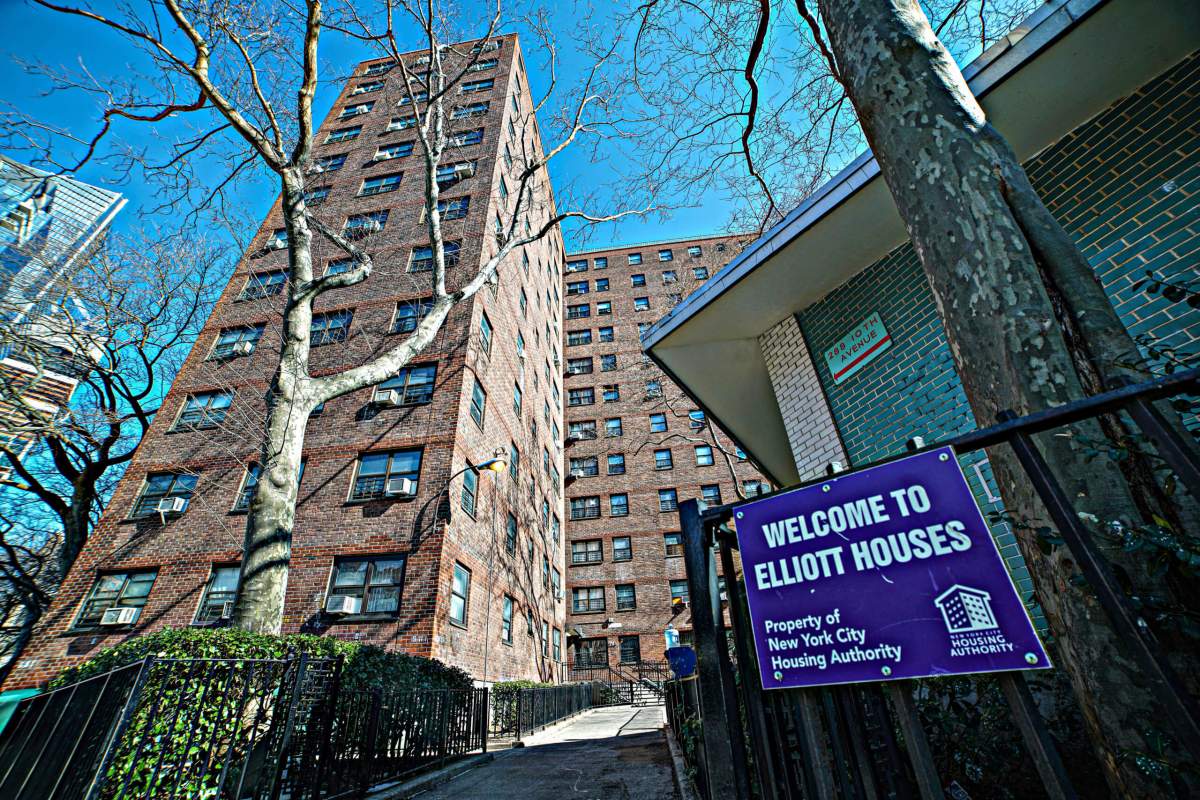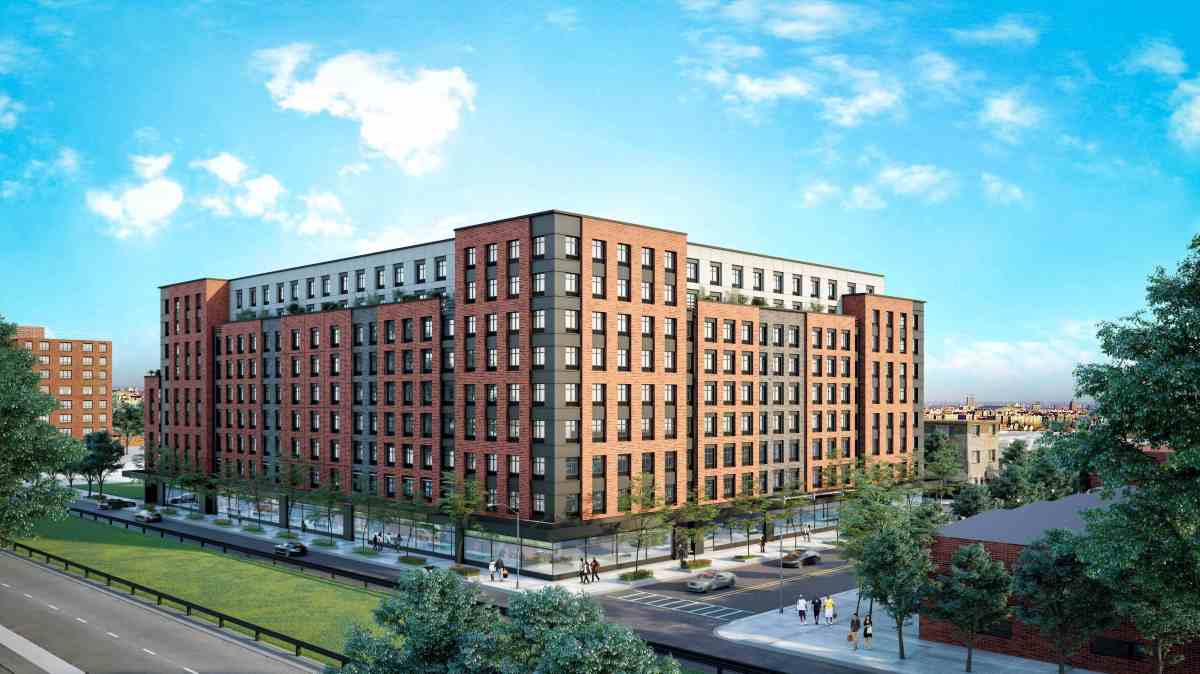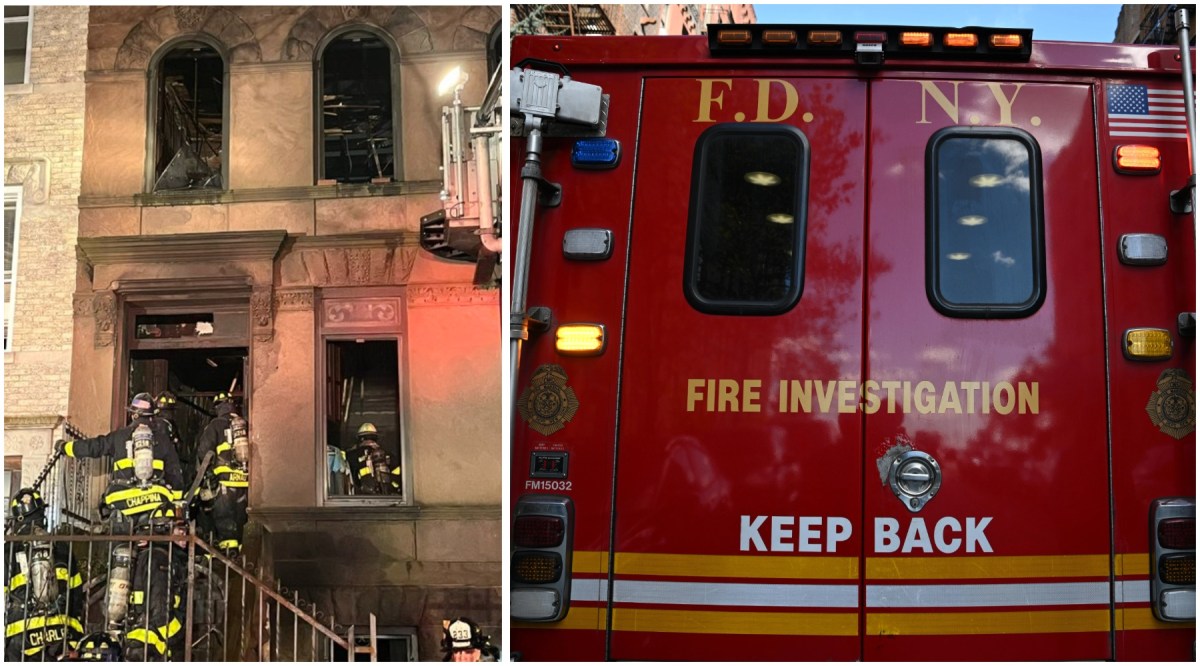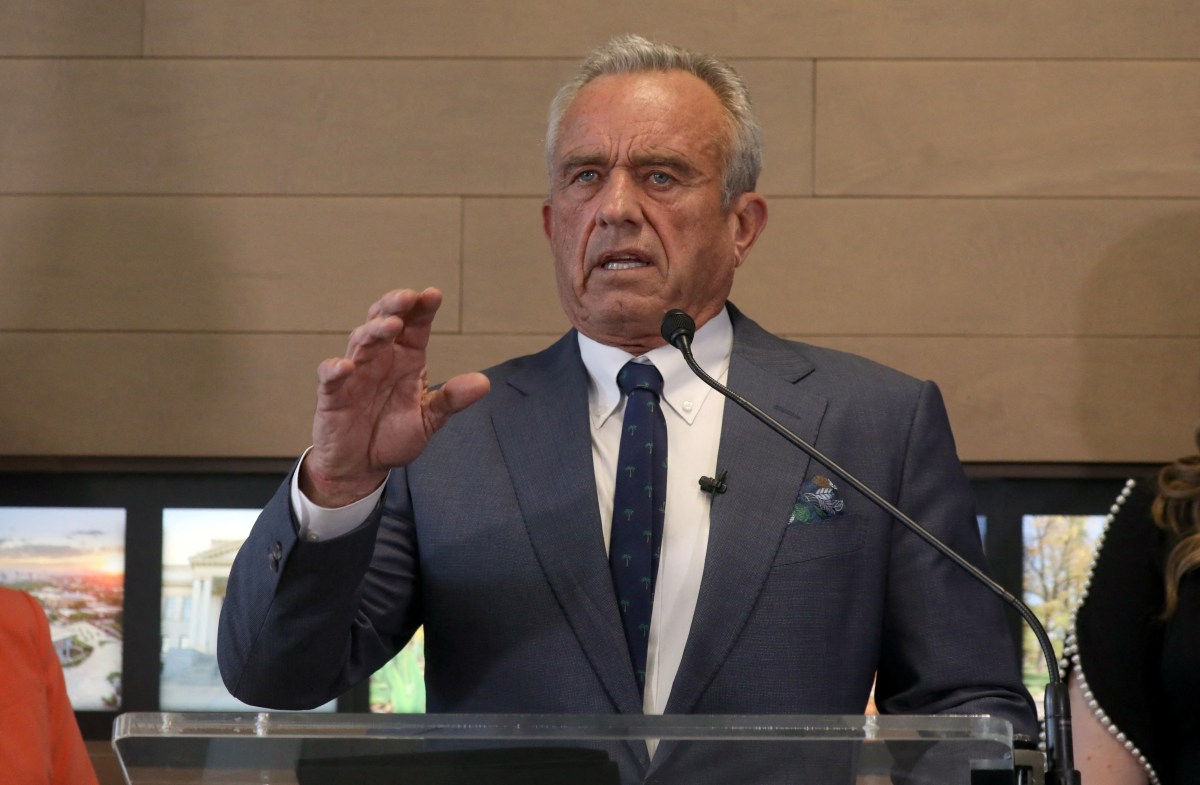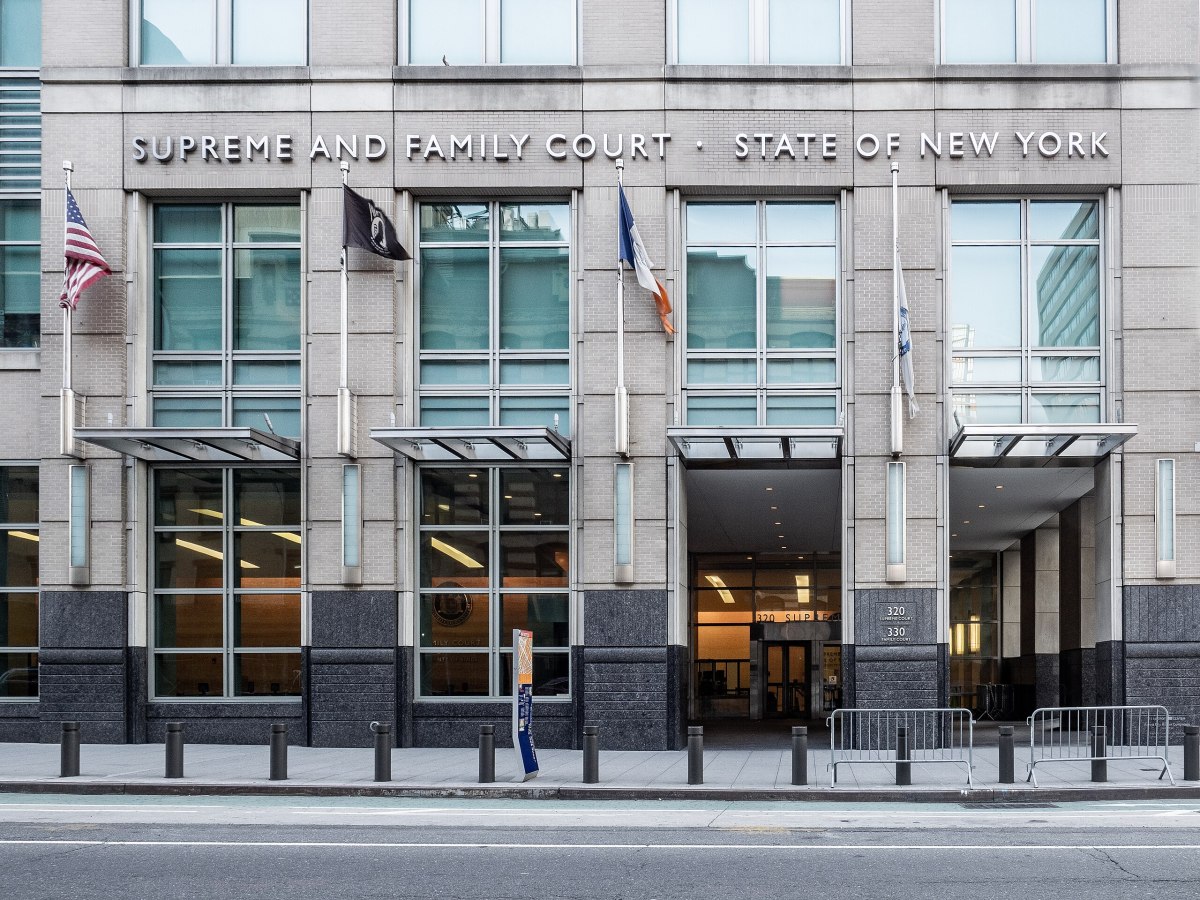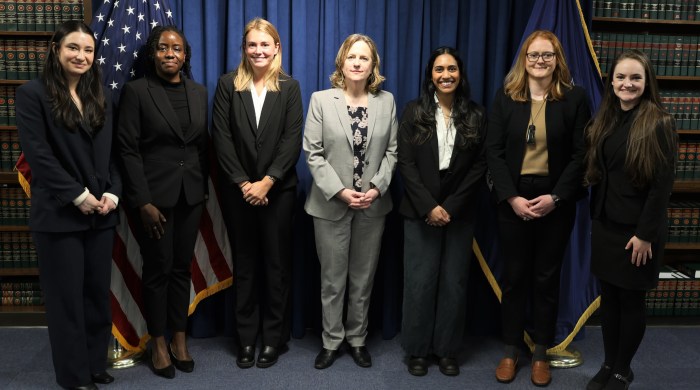A group of local activists are raising concerns about the New York City Housing Authority (NYCHA)’s plans to demolish and rebuild two crumbling Manhattan complexes, saying the proposal could lead to the permanent displacement of many residents.
NYCHA is moving ahead with a $1.5 billion plan to tear down the buildings at Fulton and Elliott-Chelsea Houses, which are home to 2,055 units and around 5,000 residents. In their place, the housing authority plans to replace the structures with brand-new buildings to house existing tenants.
Proponents of the plan have hailed the idea, saying it will bring state-of-the-art amenities like dishwashers, laundry machines, and heating and cooling controlled by residents — luxuries that are currently non-existent in the soon-to-be-gone buildings.
The plan will also add 2,625 market-rate housing units, and 875 affordable housing units, available for rent on NYCHA land, along with space for ground-floor retail.
But now the Legal Aid Society and the Community Service Society are sounding alarm bells about the potential ramifications of the proposal.
According to the two groups, demolition of existing apartments will begin before their replacement units are ready for occupancy, which will lead residents to be displaced for an indefinite period of time. They worry that such an event could potentially lead to them permanently being uprooted.
According to NYCHA, 94% of residents would not face this issue, and would be moved into their new permanent residence prior to their old one being demolished. However, the activists are concerned for the 6% who would be forced to be temporarily housed, either within the complex or somewhere else in Chelsea.
This, along with some other upshots of the plan, are not in line with the recommendations of residents that comprised the “Chelsea Working Group” — a committee formed in 2019 meant to deliver recommendations and advocate for the concerns of tenants in the Fulton and Elliott-Chelsea Houses (FEC) community, the activists said.
“This plan is unequivocally not resident-led, and is guaranteed to uproot the lives of thousands of vulnerable New Yorkers, many of whom have resided in the FEC community for generations,” said Lucy Newman, a staff attorney at the Legal Aid Society. “The displacement of current residents will only further exacerbate the gentrification of Chelsea, and that tenants were offered little-to-no transparency regarding critical factors of this plan is abhorrent. We strongly reject the current proposal, and demand that NYCHA withdraw its Draft Significant Amendment until they can guarantee that no residents will be permanently displaced as a result of their plans.”
For their part, NYCHA highlighted their outreach with residents, claiming the process had been as transparent as possible — and provided ample resources to those who would be displaced.
“NYCHA and Essence/Related hosted 35 information sessions with residents, ten of which were specifically meetings with residents of the affected buildings to have focused discussions and to explain the anticipated relocation process and plan, in addition to tabling and tours of example sites,” a spokesperson said.
NYCHA also noted that the plan was voted on by residents as part of the complex’s conversion to Section 8 housing. That comes under the Permanent Affordability Commitment Together (PACT) program.
When given the option to tear down and rebuild the complexes, or attempt serious renovations of the existing structures, tenants choose the former.
A committee of tenant leaders, known as “PACT Partners,” at the complexes helped select two developers to spearhead the project — Essence Development and the Related Companies.
But the Legal Aid Society and the Community Service Society claim that the blueprints laid out in NYCHA’s Draft Significant Amendment to the Fiscal Year 2023 Annual Plan do not reflect what tenants believed they were getting.
“During the Chelsea Working Group, residents spent month after month scrutinizing the technical issues facing their developments and the priorities they agreed on when it came to addressing them. The plan proposed by NYCHA in the Draft Significant Amendment reflects none of this work,” said David Jones, the CEO of the Community Service Society of New York.
Jones took specific issue with the addition of new apartment units being added for rent, claiming that the 25% of the new 3,500 units earmarked as “affordable” are both not enough, and too expensive.
“By ignoring what was a monumental effort, in favor of what amounts to a the most meager affordability plan our current zoning allows when increasing density, is appalling,” he said.
The affordable units are required as part of any plan where developers are changing current regulations to add more new apartments that existing laws would otherwise allow — but the addition of 2,625 market-rate housing units is too-big a giveaway, unjustified by the addition of 875 below-market-rate units, said Jones.
“It flies in the face of what residents painstakingly made clear and the broader goals our city must embrace to address our current affordability crisis,” he said. “Furthermore, the plan skirts an opportunity to take real steps to further fair housing in the Chelsea neighborhood, which sits in one of the least economically and racially diverse districts in the city.”
The groups also claim that residents who voted in favor of the demolition-and-replace plan at FEC were not properly informed of that aspect of the proposal.
“Without clear protections against displacement, a transparent process, and taking affordability seriously, we reject the Draft Significant Amendment,” said Jones.
Read more: Migrant Shelter Opens at Creedmoor in Queens



